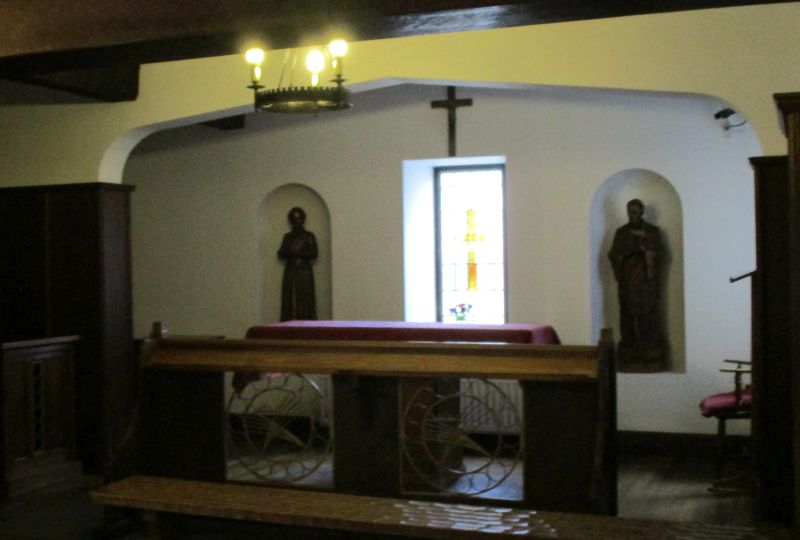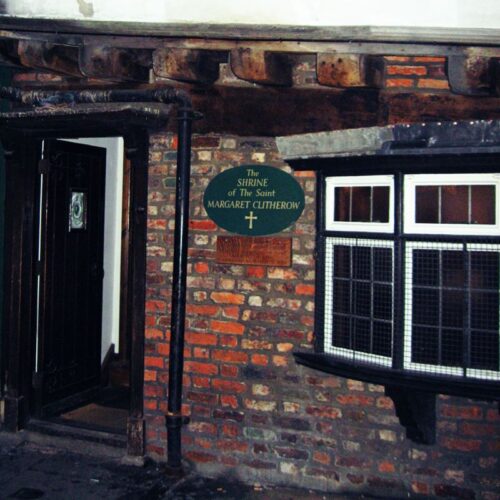I grew up in York and was always drawn to St Margaret Clitherow’s shrine. Away from the hustle and bustle of a busy city the peace, calm and acceptance wrapped itself around me.
An Act of 1581 outlawed Catholic religious ceremonies and made sheltering a priest a criminal offence, punishable by death. She observed the state religion as a child and also after she married at the age of 15.
However in the early 1570s she converted to Catholicism. This was a particularly difficult development for Margaret’s husband who was responsible for reporting Catholic worshippers to the Protestant authorities in the parish.
Margaret was first imprisoned in 1577 for failing to attend church. Two more incarcerations at York Castle followed, the final one lasting for about 20 months. Between 1582 and 1583 five priests were put to death, when freed, Margaret would make a night-time pilgrimage to the gallows.
She created a secret room in her house in Shambles as a refuge for Catholic priests. The room was discovered after a frightened boy revealed its location during a raid on her home in March 1586.
The trial took place in the Guildhall. Margaret refused trial by jury, which led to her being automatically sentenced to execution. The judges and councillors all stressed the barbarity of the sentence – to be pressed to death – in a vain attempt to persuade her into conformity. On March 25 1586 Margaret was taken to the toll-booth on Ouse Bridge and pressed to death under seven or eight hundredweight.
Margaret Clitherow was canonized in October 1970 as one of the 40 English martyrs. A relic, said to be her hand, is held at the Bar Convent in York.


